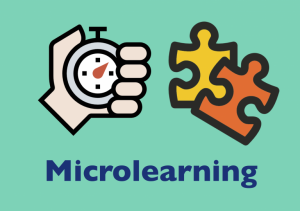Digital learning in the manufacturing industry is a powerful tool that can help organizations achieve their goals of efficiency, cost-effectiveness, and scalability. This type of learning involves leveraging technology to deliver instruction, training, and guidance in an online format. By utilizing digital learning, manufacturing companies can improve the quality of their workforce and drive innovation in the manufacturing process.
What is digital learning in manufacturing?
Digital learning is a form of learning that leverages digital technologies to provide instruction, training, and guidance to employees. It is a form of e-learning that utilizes web-based tools and resources to help employees learn the skills necessary to succeed in the manufacturing sector. In the manufacturing industry, digital learning is used to help employees develop the skills necessary for success in the workplace.
For manufacturing companies, digital learning can be used to provide training on a variety of topics such as safety, quality control, production processes, and more. It can also be used to help employees learn new skills, gain knowledge of new technologies, and stay up to date on industry trends. Digital learning in manufacturing is becoming increasingly popular as organizations look to improve the efficiency and scalability of their operations.
If you’re interested in learning more about the manufacturing industry’s most successful digital learning platform, make sure to visit this website and book a free demo.
Benefits of digital learning for manufacturing
Digital learning can provide many benefits for manufacturing companies. It can help reduce the costs associated with traditional training methods, such as onsite instruction and classroom learning. By utilizing digital learning, manufacturing companies can improve the quality of their workforce and increase the speed of knowledge transfer.
Digital learning can help them scale their operations and stay competitive in the market. By leveraging digital learning, manufacturing companies can quickly and easily provide employees with the knowledge and skills necessary for success. This can help ensure that employees are up to date on the latest technologies and trends, and that they are able to perform their jobs efficiently and effectively.
Furthermore, in manufacturing companies digital learning can help reduce the amount of time it takes for employees to become proficient in their roles. By utilizing digital learning, manufacturing companies can provide employees with the skills and knowledge necessary for success without having to invest significant amounts of time and money in traditional training methods.
Statistics on the value of digital learning in manufacturing
The use of digital learning is on the rise. According to Straits Research, the global digital learning market is projected to reach a value of $645 billion by 2030.
The research also indicates that the use of digital learning is growing at a rapid rate. According to the research, the number of organizations in the manufacturing industry using digital learning doubled between 2017 and 2020. The same study also indicates that the majority of manufacturing organizations using digital learning are small and medium-sized businesses.
Digital learning strategy for manufacturing companies
Manufacturing companies looking to leverage digital learning should develop a comprehensive strategy that should include the following elements:
1. Identifying the goals and objectives of the organization.
2. Evaluating the current level of digital learning in the organization.
3. Developing a plan to implement digital learning.
4. Identifying the appropriate tools and resources needed to implement digital learning.
5. Developing an assessment system to track the progress of digital learning.
6. Creating a feedback system to measure the effectiveness of digital learning.
7. Developing a plan to maintain and update digital learning.
8. By developing a comprehensive strategy, manufacturing organizations can ensure that they are leveraging digital learning in the most effective way possible.
Creating a digital learning plan for manufacturing companies
Once a digital learning strategy has been developed, manufacturing companies should create a plan for implementation. The plan should include details on the resources needed for digital learning, the timeline for implementation, and the assessment system to be used to track progress.
Organizations should also consider the types of digital learning tools and services that are available. There are a variety of tools and services that can be used to implement digital learning, such as online courses, virtual classrooms, webinars, and more. Organizations should evaluate the different tools and services to determine which ones are the most suitable for their needs.
Manufacturing organizations should also develop a plan for maintenance and updating digital learning. This plan should include details on how to ensure that digital learning programs are up to date and relevant. Manufacturing companies should also consider how to ensure that their employees are engaged in the company’s digital learning programs and using them correctly and effectively.
Tips for digital learning in manufacturing companies
Manufacturing companies looking to leverage digital learning should keep the following tips in mind:
1. Utilize a variety of digital learning tools and services to ensure that employees are receiving the most comprehensive digital learning experience possible.
2. Develop a plan to ensure that your digital learning programs stay up to date and relevant.
3. Develop an assessment system to track the progress of digital learning in your company.
4. Create a feedback system to measure the effectiveness of your digital learning programs.
5. Utilize analytics tools to measure the impact of your digital learning programs.
6. Ensure that employees have the necessary support and resources to effectively use your digital learning resources.
7. Develop a plan to maintain and update your digital learning programs.
By following these tips, manufacturing companies can ensure that their digital learning initiatives are successful.
The best digital learning tools for manufacturing
There are a variety of digital learning tools and services that can be used to successfully implement digital learning. Some of the most popular tools and services include:
Online Courses
Manufacturing companies can utilize online courses to provide employees with the knowledge and skills necessary for success in the manufacturing sector.
Virtual Classrooms
Virtual classrooms can be used to provide employees with instruction and guidance in a virtual environment.
Webinars
Manufacturing companies can use webinars to provide employees with the latest industry information and trends.
Video Tutorials
Video tutorials can be used to provide employees with step-by-step guidance on how to complete manufacturing tasks.
Chatbots
Chatbots can be used to provide employees with answers to their questions.
Mobile Apps
Mobile apps can be used to provide employees with access to digital learning materials on their mobile devices.
By leveraging these digital learning tools, manufacturing companies can ensure that their employees are receiving the most comprehensive digital learning experience possible.
Digital learning courses for manufacturing companies
Manufacturing companies looking to leverage digital learning should consider enrolling their employees in online courses. There are a variety of online courses available for digital learning such as:
- Manufacturing Processes and Procedures
- Quality Control in Manufacturing
- Lean Manufacturing Principles
- Robotics in Manufacturing
- Advanced Manufacturing Technologies
- Digital Manufacturing
- Automation in Manufacturing
- Supply Chain Management in Manufacturing
By enrolling employees in online courses, manufacturing companies can ensure that their employees are receiving the most comprehensive digital learning experience possible.
Digital learning services for manufacturing companies
In addition to the digital learning tools and courses available, there are a variety of digital learning in services that manufacturing organizations can utilize. These services can provide manufacturing companies with the support and resources needed to ensure that their digital learning initiatives are successful.
Some of the most popular digital learning services for manufacturing include:
- Digital Learning Consulting: Digital learning consulting services can provide manufacturing organizations with advice and guidance on how best to leverage digital learning.
- Digital Learning Platforms: Digital learning platforms can be used to deliver digital learning materials to employees.
- Digital Learning Support: Digital learning support services can provide manufacturing organizations with the support and resources needed to ensure that digital learning is successful.
- Digital Learning Analytics: Digital learning analytics services can provide manufacturing organizations with insights into the performance of their digital learning initiatives.
By leveraging these digital learning services, manufacturing companies can ensure that their digital learning initiatives are successful.
Want to learn more about how to implement digital learning in your company? Read more about the manufacturing industry’s top digital learning platform and book a free demo for your company.
Conclusion
Digital learning for the manufacturing industry is a powerful tool that can help organizations achieve their goals of efficiency, cost-effectiveness, and scalability. By leveraging digital learning, manufacturing organizations can improve the quality of their workforce and drive innovation in the manufacturing process. Organizations looking to leverage digital learning should develop a comprehensive strategy and utilize a variety of digital learning tools and services. By doing so, they can ensure that their digital learning initiatives are successful.






































































